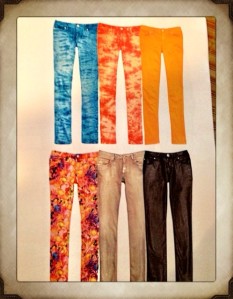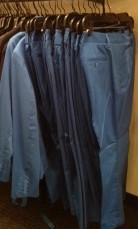Ever wonder why some clothes are so expensive?
Well, of course the answer is quality. But, you already knew that, right?
When you go shopping do you pay attention to the prices, the quality of the garment or are you an impulse shopper? If it looks cute and it fits, buy it, right? Well, let’s think about that. Have you ever bought a winter scarf, just to find that you’re purchasing another scarf the following year? Why? Is it out of style? Does it just look old? – And it’s only been one year. Did you check the quality?
Quality checking while you are shopping will actually save you money on your wardrobe in the long run. Although you may spend more money, the old adage that you get what you pay for is very true with clothing. So this year when you search for a new scarf, because last year’s shrunk after one wash, or the dye faded, or it just didn’t store well, try this quality check:
Find two scarves in the same department store. For example, two cashmere scarves.
Be sure one is a moderate price, let’s say $25. And the other is about $100 or higher.
Hold each scarf in separate hands and feel the fibers in the material.
The more expensive scarf will feel softer and denser with consistent thread hairs. This label probably states 100% cashmere.
The cheaper scarf will most likely feel like coarser hairs. This is because the cheaper scarf; although labeled cashmere, is most likely blended with other fibers. The label could say 100% cashmere blend. The key word here is blend. Because this scarf is blended with other fibers, it is cheaper.
Let’s look at one more final reason that one cashmere scarf is more expensive than the other. The best cashmere items are made from the finest hairs handpicked from Mongolian goats in the Spring.[1] You’re paying more for finer quality hairs in the expensive scarf. On the other hand, we may never know where the coarser hairs in the cheaper scarf came from. They may even be synthetic.
So this year, if you go out to buy a scarf and want a good quality that will last several years, consider purchasing the more expensive scarf.
Want a few more tips for checking the quality of clothing while you shop: Try these additional tips:
- When buying a wool jacket or sweater, squeeze the wool tightly with your hands for several seconds, like you are trying to squish it all together. If the material is smooth when released, then the quality is expensive and will last longer. If the material remains bunched up and wrinkly, then you might be getting another jacket next year too.
- If a pocket is fake, or super skimpy, the manufacturer may have cut corners to save money on material. If you don’t have a place for your cell phone, or perhaps car keys, this item may end up just hanging around your closet and not get much use. You would be better off purchasing an item with useful pockets.
- Most clothing that is fully lined is a better quality. If a lining does not completely cover the inside of a garment, then by the same time next year, you will most likely see the lining ends showing through the front of the garment and you’ll probably be buying another one of these items next year too.
- The width of the material left around the seams is a telltale sign of a quality garment. If the seams lie flat on the inside and there is enough material left for alterations, you have a quality garment.
- Hem stitching should not been seen from the outside of the garment, unless it is intentional in the design.
- If you pull the seams, the threads should not be loose, or see through. If they are, then perhaps the garment will not hold up in the washing machine too many times. Also, weak seams can become crooked over time.
- For trousers, is there at least two inches left in the hem for alterations? If so, then this may be a quality item worth custom fitting.
So with these tips, and your next shopping trip, you just may start transforming your closet into a custom wardrobe of your own.
[1] Wikepedia, http://en.wikipedia.org/wiki/Cashmere_wool















